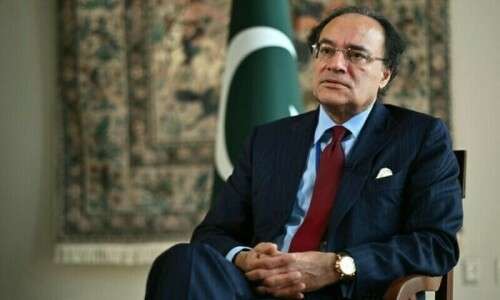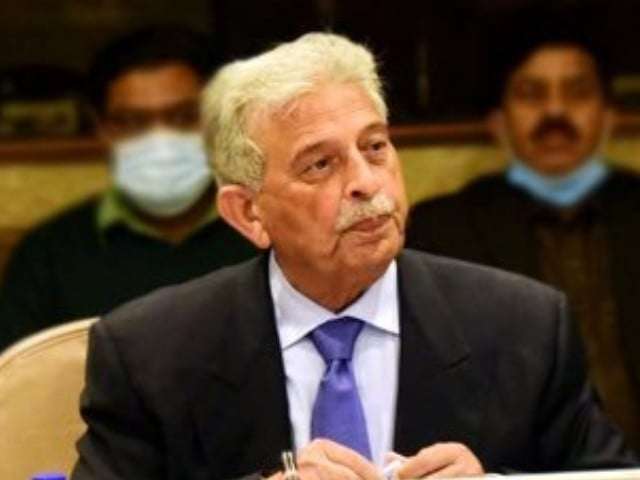Introduction
The government of Pakistan has recently hinted at plans to ease the financial burden on the salaried class and provide relief to industrial consumers, particularly in terms of electricity tariffs. This move is expected to help both individuals and businesses, especially those struggling with the high cost of living and the increasing cost of electricity. Finance Minister Muhammad Aurangzeb and Power Minister Awais Ahmad Khan Leghari have provided insights into these potential changes during a recent event organized by the Pakistan Business Council. While state-owned power distribution companies have requested significant increases in security deposits from consumers, the government is working to address the growing concerns surrounding energy costs and the taxation system.
The Financial Relief for the Salaried Class
Disproportionate Tax Burden on Salaried Individuals
Finance Minister Muhammad Aurangzeb acknowledged that the salaried class in Pakistan is burdened with a disproportionate tax load. The finance minister emphasized that the government is aware of the strain this has placed on salaried individuals and has proposed measures to ease this burden. However, Aurangzeb also cautioned that any changes in tax slabs may be complicated by Pakistan’s ongoing agreement with the International Monetary Fund (IMF). This relationship with the IMF has placed constraints on the government’s ability to make substantial changes to tax structures in the upcoming budget.
Despite the ongoing IMF program, the finance minister reassured attendees that the tax filing system for salaried individuals would undergo significant improvements. The aim is to simplify the process, reducing the need for tax consultants and other intermediaries. This, in turn, would reduce costs for the salaried class, making the tax filing process more straightforward.
Expected Decrease in Policy Rate
Aurangzeb also highlighted the government’s expectation that the policy rate would decrease further, citing a steady reduction in inflation. This reduction in inflation, coupled with improvements in Pakistan’s foreign exchange reserves (which have risen to $13 billion), is expected to provide a favorable environment for businesses. With a positive outlook on the country’s credit rating, the government aims to create conditions that are more conducive to economic growth and stability.
The finance minister also mentioned that large businesses are borrowing at interest rates below 11%, which further underscores the improving financial conditions. However, the government remains committed to its IMF obligations, and Aurangzeb reiterated that the tax burden on the salaried class remains an area of focus.
Electricity Relief for Industrial Consumers
Cheaper Electricity Rates for Industries
In addition to tax relief for salaried individuals, the government is considering providing cheaper electricity rates for industrial consumers. Power Minister Awais Ahmad Khan Leghari announced that the government intends to offer electricity to industrial consumers at marginal costs, which would provide significant savings for industries. This measure is particularly important for sectors like manufacturing and data centers, which rely heavily on electricity to operate.
The government is also exploring the possibility of offering even cheaper electricity rates for specific industries, such as data centers and IT businesses, which are critical to Pakistan’s economic future. This initiative is part of a broader effort to improve Pakistan’s competitive edge in the global marketplace, especially in sectors that are energy-intensive.
Rationalizing Electricity Tariffs
Minister Leghari also discussed the government’s efforts to review the tariff structures for nuclear power plants, hydropower plants, and other public-sector electricity producers. The goal of this review is to address the circular debt issue and reduce electricity rates in a sustainable manner. As part of this initiative, the government aims to reduce the cost of electricity for both consumers and businesses.
It is worth noting that industrial electricity tariffs in Pakistan have already dropped by Rs11 per unit since June 2024. The government’s decision to review tariff structures is expected to bring further reductions and contribute to the country’s economic recovery.
The Future of Electricity Pricing
Leghari revealed that Pakistan is moving towards a competitive electricity market, with the expectation that it will be fully operational within the next two to three years. The government plans to implement this system gradually, beginning in April 2025. This new market structure will encourage competition, which should help drive down electricity prices in the long run.
In addition to these reforms, the government is also reviewing the viability of several power projects that have been committed in violation of the least-cost principle. The government has stated that it will discontinue power purchases from these plants if they fail to achieve financial closure by April 2025.
Proposed 400% Increase in Security Deposits
Power Distribution Companies’ Request for Increased Security Deposits
While the government is working on providing financial relief to consumers, state-owned power distribution companies are seeking an approval to increase security deposits by up to 400%. This request, which has been submitted to the National Electric Power Regulatory Authority (Nepra), is aimed at securing against defaults in consumer bills.
Power companies argue that the increase in security deposits is necessary due to the rising electricity rates, which have increased by 295% since 2008. The proposed increase in security deposits would require consumers in lower slabs to pay higher amounts to cover the cost of their electricity consumption. The companies suggest that the security deposit should be equal to 2.5 months of electricity bills, which would raise the deposit per kilowatt from Rs1,220 to Rs5,179 for households under 10-marla, and up to Rs15,538 for homes with larger land holdings.
The increase in security deposits would apply to new connections, reconnections, changes in sanctioned load, and changes in tariff categories. This proposal, which also includes changes to the way deposits are calculated, is expected to be finalized after approval from Nepra.
Conclusion
The government’s proposed measures to provide tax relief for salaried individuals and reduce electricity tariffs for industrial consumers reflect its commitment to improving Pakistan’s economic environment. While these steps are still under consideration, they represent a positive direction for businesses and individuals who have been struggling with high costs. The proposed changes are expected to bring much-needed financial relief, improve business competitiveness, and support the broader economy.
It remains to be seen how the government will balance its commitment to the IMF with the need to alleviate the financial pressures on citizens and businesses, but the current signals suggest that the government is moving towards a more consumer-friendly approach.
FAQs
1. What are the proposed changes for the salaried class in Pakistan? The finance minister has hinted at easing the tax burden on the salaried class. While the details are unclear, the government plans to simplify the tax filing process and reduce reliance on consultants.
2. How will industrial electricity tariffs change in Pakistan? The government is considering providing electricity to industrial consumers at marginal cost, which could result in lower electricity rates for industries, particularly energy-intensive ones like IT businesses.
3. What is the proposed increase in security deposits for electricity consumers? Power distribution companies have requested a 400% increase in security deposits for consumers in lower slabs. This is intended to safeguard against defaults in consumer bills due to rising electricity prices.
4. Will the uniform electricity tariff be phased out? Yes, the government plans to phase out the uniform electricity tariff across the country. Talks with provinces and stakeholders are expected to begin soon to address this issue.
5. How will the government reduce electricity rates sustainably? The government is reviewing tariff structures for public-sector power producers, including nuclear and hydropower plants, to address circular debt and reduce electricity rates over time.



